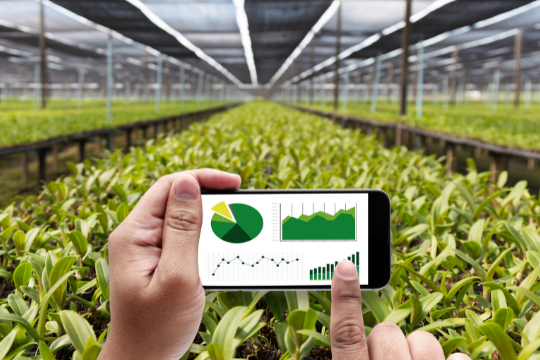
The development of new technologies and IoT has led to an enormous increase in the importance and popularity of agriculture. For the development of farming, there are a variety of techniques and tools, including IoT, which can be utilized for increased crop yield and more. According to the UN Food and Agriculture Organization, unless the world produces 70% more food by 2050 than it did in 2006, the world will be unable to feed its growing population.
The Internet of Things is supplying analytics for farmers and agricultural companies to meet this demand. It is possible to increase productivity, obtain a large global market, and get insights on recent trends in crops with the Internet of Things (IoT).
What is IoT?
A big part of developing solutions to problems is the Internet of Things (IoT). There are many components that go into the Internet of Things, including sensors, software, network components, and other electronic devices. In addition, it improves the effectiveness of data.
IoT allows the exchange of data over a network without human involvement. Data will be transferred over the network using the IP address assigned to the device.
According to a Garner report, there will be a 30% increase in connected devices at the end of 2016 compared to 2015. Furthermore, by 2020, that number will grow to 26 billion.
Technology that uses the Internet of Things is more efficient due to the following reasons:
- With any device, you have global connectivity
- Human effort is at a minimum
- Access to information is faster
- Greater efficiency in time
- Communicate effectively
Scope Of IoT In Agriculture
In the internet of things, devices communicate efficiently with each other without the need for human intervention. IoT technology has now been adopted by many agricultural industries for smart farming to increase efficiency, productivity, global market, and other benefits, such as minimum human intervention, time, and cost.
Technology advancement has resulted in smaller, more sophisticated, and more economical sensors. With full implementation of the pledge, the networks will also be globally accessible.
As a solution to the problems currently facing the agriculture industry, smart farming encourages innovation. IoT devices and smartphones can be used to achieve all of this. In addition to getting any information they need, farmers can also keep track of their farming business.
Benefits Of IoT in Agriculture
In order to enhance farming, IoT can be used in the following ways:
- By using sensors, IoT can help manage water efficiently without wasting it.
- Monitoring the land continuously helps prevent unforeseen disasters from happening.
- In addition to increasing productivity, reducing manual labor, and reducing time spent on farming also boosts the efficiency of farming.
- Observing the growth of crops can be done easily through crop monitoring.
- Farming can be adapted according to the soil level due to information such as PH, moisture, etc.
- Plant and crop diseases are detectable using sensors and RFID chips. EPC (information) is communicated to the reader through RFID tags. This information can be accessed remotely by the farmer, who can then take the needed measures. Crops will be protected automatically from coming diseases.
- The global market will see an increase in crop sales. A farmer doesn’t have to worry about geographic restrictions to connect to the global market.
Sunvera Software develops next-level software applications from start-to-finish. Schedule a free 30-minute call with us to discuss your business, or you can give us a call at (949) 284-6300.

